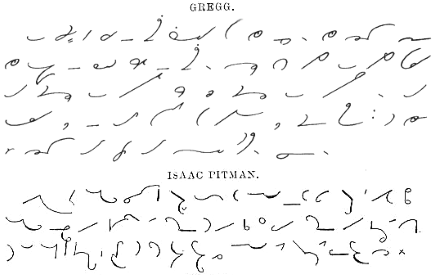
In the ever-evolving world of technology and communication, the need for efficient and accurate note-taking methods has become increasingly crucial. One such method that has stood the test of time is stenographer shorthand writing. It is a magical skill that allows stenographers to capture speech at remarkable speeds, making them indispensable in various industries such as courtrooms, legislatures, and live transcription services.
But what exactly is stenographer shorthand writing? It is a technique that uses a series of symbols, abbreviations, and phonetic representations to condense spoken language into an easily translatable format. These symbols are written in a special shorthand machine or on paper using a technique called “writing on the fly.” The process involves capturing speech in real-time with utmost accuracy and efficiency.
To get started with stenography, one must first learn the basic principles of the system. The most common form of shorthand used by stenographers is known as “steno theory.” This theory is based on phonetics, where sounds are represented by specific symbols or combinations of symbols. For example, the word “cat” may be represented by the shorthand symbol “KAT.” Learning these symbols and practicing their application is the backbone of becoming a proficient stenographer.
The primary advantage of stenographer shorthand writing is speed. Stenographers can reach astounding speeds of up to 225 words per minute or more, far surpassing the average human typing speed. This ability to transcribe speech in real-time makes stenographers invaluable in fast-paced environments where accuracy is essential.
Another benefit of stenography is its concise nature. By condensing words and phrases into shorthand symbols, stenographers can capture the essence of speech while skimming over unnecessary details. This efficiency not only saves time during the transcription process, but also allows for better focus and concentration on the content being spoken.
Stenographers often use specialized machines called stenotype machines, which have a keyboard with fewer keys than a standard QWERTY keyboard. These machines are designed specifically for stenography and allow for quick and accurate input of shorthand symbols. Some modern stenotype machines even have built-in speech recognition software, further streamlining the transcription process.
With advancements in technology, stenographers have also adapted to the digital landscape. Many now use computer-aided transcription (CAT) software that converts their shorthand symbols into readable text. This software helps streamline the transcription process by automatically translating the symbols into words, reducing the need for manual transcribing.
The demand for stenographers is growing steadily, especially in legal and medical professions. Stenographers play a vital role in courtrooms, accurately capturing every word spoken during trials, depositions, and hearings. In the medical field, stenographers ensure accurate transcription of doctors’ notes, improving patient care and facilitating medical research.
However, despite its many advantages, stenographic shorthand writing is not without its challenges. Learning steno theory and becoming proficient in the system can be a time-consuming process. It requires dedication, practice, and a keen ear for detail. Additionally, stenographers often work under pressure, needing to transcribe complex and technical information in real-time accurately.
In conclusion, stenographer shorthand writing is an essential skill that unlocks the magic of capturing speech in the blink of an eye. With unmatched speed and efficiency, stenographers are invaluable in industries where accurate note-taking is critical. Their ability to condense spoken language into concise shorthand symbols showcases the artistry and dedication required to master this skill.
As technology continues to advance, stenography remains a relevant and sought-after profession. The seamless integration of stenotype machines, CAT software, and digital transcription tools further enhances the efficiency and accuracy of stenographer shorthand writing. Unlocking the magic of this art form is not only a testament to the skill and dedication of stenographers but also a testament to the limitless possibilities of human communication.


















